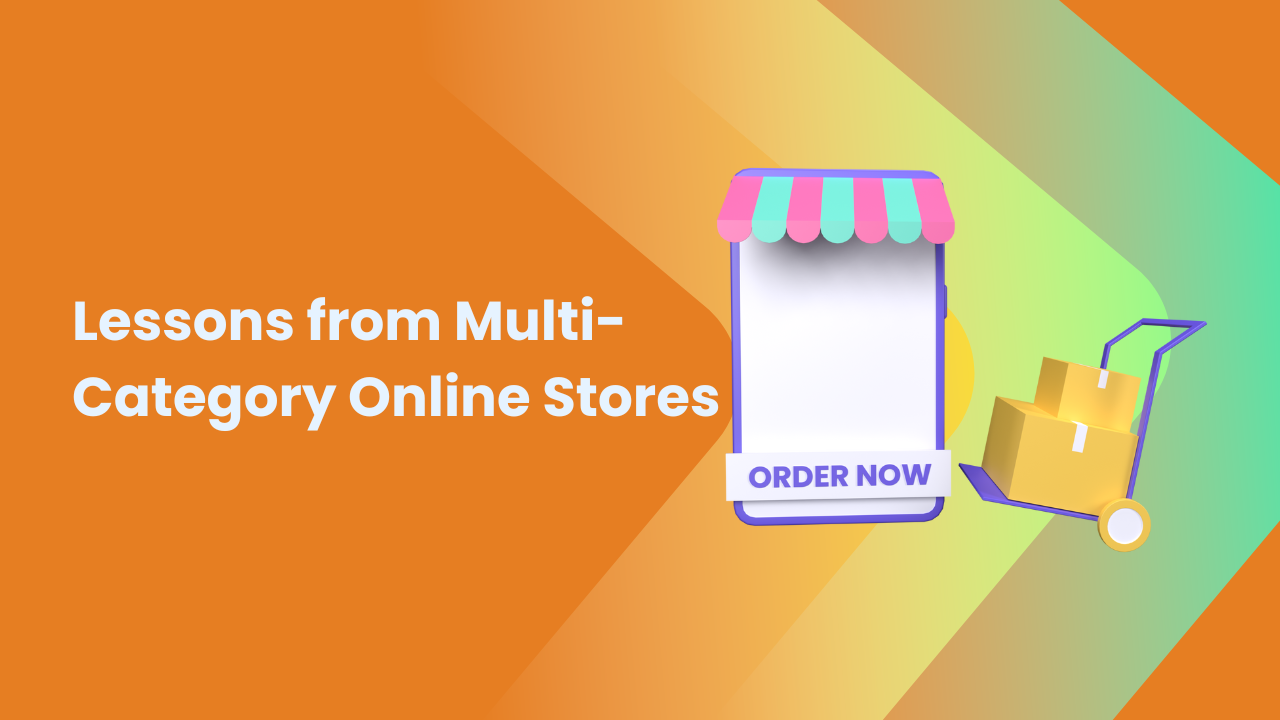Share this Article
As Nepal enters a new era of digital entrepreneurship, starting an online store has become more than just a trend—it is now a viable path to building a sustainable, scalable business. Whether you're a small-scale artisan in Pokhara, a clothing brand in Kathmandu, or a supplier of traditional crafts from Bhaktapur, the tools to build an e-commerce presence are more accessible than ever. Yet, knowing where to begin and how to navigate the maze of choices can be overwhelming. This guide provides a comprehensive step-by-step breakdown of how to start an online store in Nepal, combining local context with modern technology.
Step 1: Identify Your Niche and Products
Before you dive into any platform, you need clarity on what you're selling. In Nepal’s online market, some niches are already saturated—such as imported clothing, gadgets, and food delivery—while others remain underserved. Think beyond what is trendy and ask what is meaningful. Are you selling locally produced handicrafts? Natural skincare? Sustainable fashion? Handmade jewelry? Focus on products that offer either local authenticity, sustainable production, or fulfill a real need among underserved customer segments. A well-defined niche not only guides your branding and messaging but also helps in building a loyal customer base. In Nepal, successful online businesses often begin with a strong personal connection to the product—such as farmers launching organic brands or home-based women entrepreneurs selling traditional attire.
Step 2: Research the Legal Requirements
While starting a physical store in Nepal requires licenses, permits, and rent, an online store reduces many of these burdens—but not entirely. You still need to register your business formally. Start by obtaining a business registration certificate from your local ward office or municipality. Next, apply for a PAN or VAT number from the Inland Revenue Department. If you're planning to import products, make sure to consult customs regulations through the Department of Customs. If you're operating under your own name as a sole proprietor, the process is fairly straightforward. However, if you’re forming a company or partnership, additional paperwork—like MOA and AOA documents—will be required. Fortunately, platforms like Saauzi, ConnectIPS, and BizSewa are making the registration and invoicing process much smoother for Nepali startups.
Step 3: Choose the Right E-Commerce Platform
Choosing the right platform is critical. Most Nepali entrepreneurs now prefer no-code and low-code ecommerce builders like Saauzi, Thulo.com, or Pasal eCommerce, as they allow users to create and manage stores without needing coding knowledge. These platforms offer features tailored to local needs, such as Nepali payment gateway integration, VAT invoice generation, and multi-language support. For those with technical resources or scalability in mind, headless solutions or custom-built Shopify and WooCommerce setups are also viable. However, they often require web developers and longer timelines. Saauzi, for instance, allows you to build an online store in just a few hours, complete with backend management, mobile-friendly design, and Nepali logistics plugins.
Step 4: Register a Domain and Branding
Your store’s identity begins with a domain name. Platforms like Mercantile, Name.com.np, or Cloudflare Nepal allow you to register a .com.np domain for free—provided you have a registered business or citizenship proof. Keep your domain short, relevant to your brand, and easy to recall. Simultaneously, work on a logo, brand color palette, and brand voice. A strong Nepali brand understands both aesthetics and culture—use local motifs, colors, and references where possible. Whether you're targeting the youth with modern streetwear or reaching older demographics with herbal products, your visual branding should clearly reflect who you are and what you stand for.
Step 5: Add Products and Manage Inventory
Once your store is set up, it’s time to populate it with your offerings. Make sure each product listing includes high-quality photos (preferably multiple angles), a compelling description, price, stock status, and delivery time. In Nepal, where trust in online stores still varies, product transparency is crucial. Be honest about your stock, materials used, and expected delivery times. Many builders like Saauzi and Pasal allow inventory tracking, SKU assignment, and bulk uploads to help you manage a growing product base. If you work with multiple suppliers or handmade products, make sure to update stock manually or use inventory syncing tools to avoid overselling.
Step 6: Integrate Payment Gateways
A major barrier to completing online purchases in Nepal is the lack of diverse and reliable payment options. Fortunately, local fintech startups are changing that. Platforms like Khalti, eSewa, IME Pay, and FonePay now offer seamless integration with most Nepali ecommerce builders. If you're targeting international buyers, Stripe and PayPal may also be needed—though setup can be more complex. Choose a combination that suits your market. For local customers, mobile wallets and cash-on-delivery remain the most popular. Be sure to offer multiple payment choices to minimize cart abandonment.
Step 7: Setup Delivery and Logistics
Logistics can make or break your online business. Nepal’s geography poses challenges, but courier services like Pathao, Khaanpin Delivery, Kumari Logistics, Delivery Sewa, and NepXpress have filled much of the gap. Saauzi, Thulo, and other platforms offer built-in delivery plugins or API integrations. Select a partner based on your coverage area, delivery time, COD support, and pricing. Clearly display delivery charges and timeframes on your store. For example, offer same-day delivery in Kathmandu Valley and 3–5 days for rural deliveries. Build customer trust by allowing live order tracking, SMS alerts, and customer support for delayed shipments.
Step 8: Promote Your Store with Digital Marketing
No matter how good your store is, customers won’t come unless you market it. Use Facebook and Instagram Ads to target Nepali demographics, particularly in urban centers like Kathmandu, Pokhara, and Biratnagar. Platforms like BoostNow and Digital Gurkha offer localized ad services. SEO is another powerful tool—optimize your product titles and descriptions with Nepali search terms like "online jewelry in Nepal" or "buy lehenga in Kathmandu." Influencer marketing is growing, too. Collaborate with TikTok creators and YouTubers who share your audience. Consistently post stories, product highlights, customer testimonials, and behind-the-scenes content. Build an email list for product drops and sales events.
Step 9: Handle Customer Support and Feedback
Online commerce in Nepal is still new to many consumers, which means customer support plays an outsized role. Offer live chat support using tools like Tawk.to, Messenger, or WhatsApp Business. Respond quickly to queries and be transparent about delays or out-of-stock items. Saauzi and similar platforms offer built-in ticket systems to help manage returns, refunds, and complaints. Display clear return and exchange policies to boost customer confidence. Encourage customers to leave reviews on your site and social media, and respond politely—even to criticism. Reputation builds trust, and trust builds repeat customers.
Step 10: Scale with Business Insights
Once your store is running smoothly, it’s time to grow. Track performance with built-in dashboards that show sales trends, top-selling products, conversion rates, and abandoned carts. These insights can help you tweak your pricing, redesign pages, or launch new marketing campaigns. You can also consider expanding into B2B wholesale, launching a mobile app, or selling on platforms like Daraz and SastoDeal. Use customer behavior data to develop loyalty programs, seasonal offers, and cross-selling strategies. Eventually, you may even integrate with larger ERP systems or CRM tools for deeper business automation.
Future of Online Stores in Nepal
The road ahead for Nepali e-commerce is promising. With 5G connectivity, rising smartphone usage, and growing digital trust, the playing field is becoming more level. Even rural entrepreneurs can now launch stores from their phones using easy-to-build platforms. AI-driven tools for chatbot support, inventory forecasting, and dynamic pricing are also entering the mainstream. As cross-border commerce regulations relax and digital literacy increases, more Nepali products—from Dhaka textiles to herbal supplements—will find international markets.
Conclusion
Starting an online store in Nepal no longer requires deep technical knowledge, heavy capital, or complex logistics. With the right planning, tools, and local integrations, anyone can launch and scale a successful digital storefront. The key lies in choosing the right niche, understanding your audience, selecting a platform like Saauzi that aligns with your business goals, and delivering a seamless shopping experience. As the Nepali digital ecosystem matures, this is the perfect time to build your online store—not just as a side hustle, but as a full-fledged business that can grow across borders and generations
Categories:
E-commerce Tips & Tutorials
,
Marketing & Growth
,
SEO & Content Marketing
,
Beginner’s Guides
,
Sales & Conversion
,
Success Stories & Case Studies
,
Platform Features & Updates
,
Platform Comparisons
Tags:
Online Store in Nepal
,
5 Simple Steps
,
local businesses
,
e-commerce app
,
Small Business
,
strong brand
,
E-commerce
,
Role of Social Media
,
Growing sales
,
strategies







